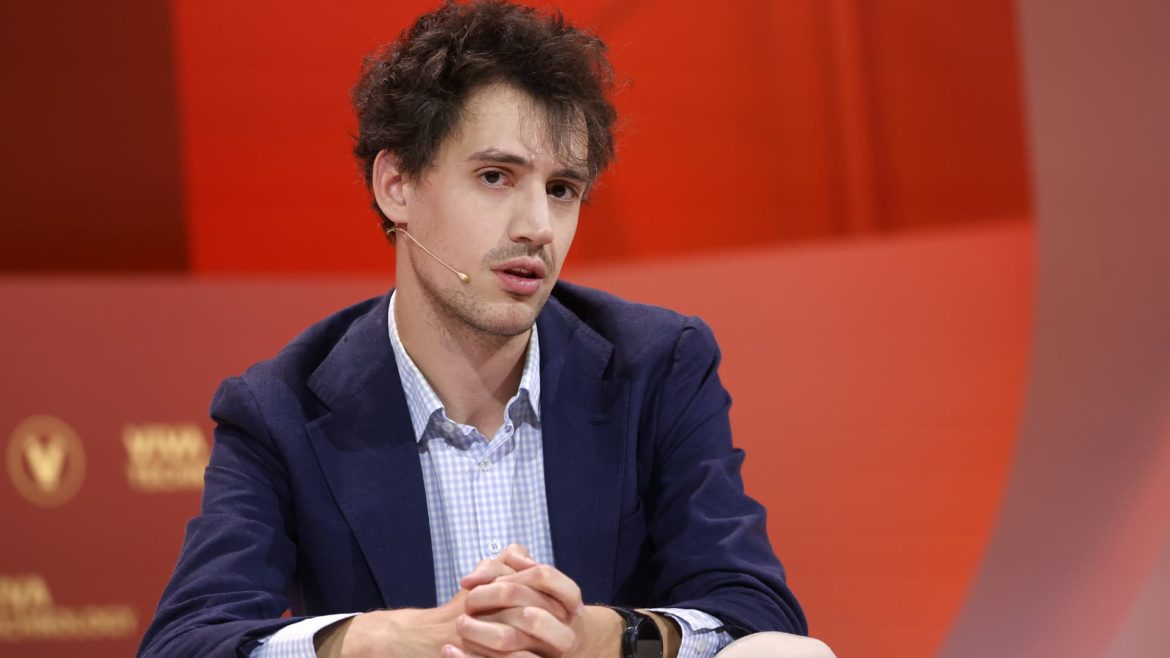Rising Star in AI: Mistral’s Remarkable Ascent
In less than a year since its founding in mid-2023, Mistral AI has emerged as an influential player in the global artificial intelligence landscape. Positioned in Paris and founded by ex-Google and Meta researchers, this startup has rapidly challenged Silicon Valley’s biggest names, including OpenAI and Anthropic. Between groundbreaking open-source releases, strategic partnerships, and innovative model designs, Mistral exemplifies how fresh, well-funded entrants can reshape the AI competitive field.
A New Challenger with Powerful Foundations
Mistral AI debuted with a bold open-source approach, launching models such as Mistral 7B and the later Mistral Large, an advanced generative AI model noted for its “top-tier” reasoning, coding, and mathematical capabilities. The company’s claim that these models rival GPT-4 in accuracy and reasoning is backed by benchmarks positioning Mistral Large as the world’s second-ranked publicly accessible model after OpenAI’s flagship.
What sets Mistral apart is its fusion of strong open science ethos and powerful performance. Mistral Large’s open weights enable transparency and customization, fostering a community-driven development unlike many proprietary rivals. While data and training processes remain unreleased, the availability of these extensive model parameters fuels rapid innovation and adoption, notably in Europe.
Strategic Collaborations: Microsoft’s Crucial Role
One of Mistral’s most impactful moves has been its partnership with Microsoft. Building on a multi-year collaboration, Microsoft integrated Mistral Large into its Azure platform, signaling a shift in Microsoft’s AI sourcing strategy to diversify beyond exclusive reliance on OpenAI. This relationship aligns with Microsoft’s ambition to supply next-generation generative AI chatbots and enterprise solutions with cutting-edge, cost-efficient models.
Microsoft’s investment in Mistral, coming shortly after securing a $415 million Series A led by Andreessen Horowitz, highlights the tech giant’s broader intent to foster multiple AI innovation hubs globally. This ensures competition and self-sufficiency in AI development while addressing rising enterprise demands for robust and customizable AI frameworks.
Technical Milestones: Reasoning and Efficiency
Mistral’s standout achievement is the release of reasoning models that tackle complex problem-solving tasks with performance comparable to GPT-4 and Google DeepMind’s Gemini Ultra. The startup has demonstrated proficiency across benchmarks in logical reasoning, coding tasks, and mathematical problem-solving, areas traditionally dominated by OpenAI.
Moreover, its work on compact, efficient models follows current AI trends favoring smaller, faster, yet capable systems. Models like Phi-4-Mini-Reasoning in the broader landscape echo Mistral’s push for scalability, where a model two to three times smaller matches or outperforms significantly larger counterparts on challenging tests. This efficiency reduces computing costs and broadens accessibility.
Open Ecosystem and Europe’s AI Sovereignty
Mistral’s Paris base and open-source commitments bring fresh momentum to Europe’s AI ambitions. Unlike Silicon Valley dominance, Mistral exemplifies how European startups can leverage technical prowess and strategic partnerships to foster AI sovereignty—an increasingly vital goal given data privacy, regulation pressures, and geopolitical tensions.
By making models and APIs accessible through cloud platforms like Azure, Mistral nurtures a competitive ecosystem beyond closed, proprietary AI. This approach may shift the balance in AI development, empowering developers and enterprises with alternatives to entrenched players.
Expanding Product Suite and Market Presence
Beyond foundational models, Mistral has diversified its offerings with models tailored to coding, such as Devstral, and chatbots like Le Chat, designed to compete directly with ChatGPT variants. These introductions emphasize practical applications and underline Mistral’s intent to capture broader market segments, from developers needing powerful coding assistants to businesses looking for scalable conversational AI.
The startup’s rapid innovation cycle and multi-product rollout demonstrate nimbleness—a hallmark advantage of smaller, hungry companies within the AI race.
Outlook: Mistral’s Challenge and the AI Market Dynamics
Mistral’s swift rise presents a disruptive force challenging the established status quo dominated by OpenAI, Google, and a few others. Its combination of open-source accessibility, top-tier benchmarks, and influential backing helps the company position itself as a global contender.
However, Mistral’s success invites key questions: Will it maintain growth amid intensifying competition? Can it expand its ecosystem sustainably while proving commercial viability? How will Microsoft and other partners leverage their relationship long term?
Given current signals, Mistral appears well poised to contribute significantly to the AI industry’s evolution, driving innovation, promoting diversity in models and vendor choice, and enhancing global AI development frameworks.
—
A Pivotal Moment in AI Innovation
Mistral AI’s journey from a nascent startup to a Microsoft-backed AI challenger within less than a year showcases a remarkable narrative of innovation, strategy, and ambition. By delivering open, high-performance reasoning models and collaborating with global tech leaders, Mistral is rewriting expectations for new entrants in the AI domain.
As AI’s influence over technology and society deepens, the emergence of dynamic competitors like Mistral ensures a richer, more competitive future—where innovation is not confined to legacy powerhouses but fueled by diverse players pushing the boundaries of what AI can achieve. The ongoing race between startups and giants will continue to drive revolutionary advancements, with Mistral firmly in the lead pack.





